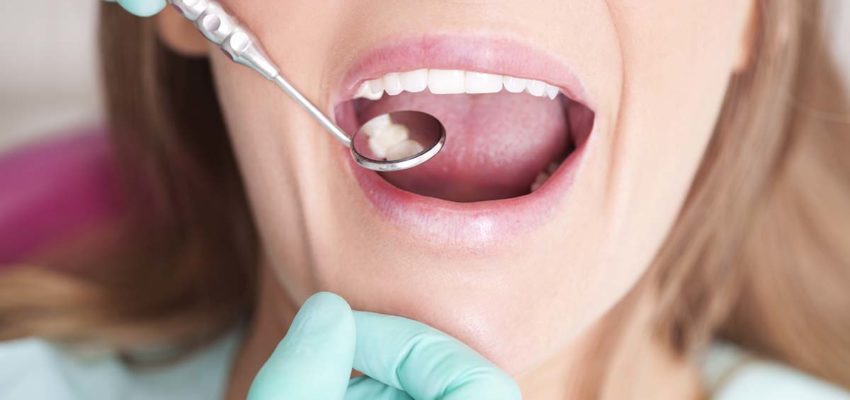Amalgam – Hazards in Your Teeth

Introduction
Amalgam has, ever since its introduction 150 years ago, been the subject of recurrent controversies because of its mercury content. Amalgam is an unstable alloy and continuously gives off mercury (Hg) in the form of gas, ions and abraded particles (Stock, 1939 a, Radics et al., 1970, Mocke 1971, Till and Wagner, 1973, Svare et al., 1981). Amalgam contains an especially corrodible gamma-2-phase of tin and mercury. There is also a small phase of fluid mercury with dissolved tin (Brecht-Bergen, 1933). Tin dissolves continuously in surrounding fluids and also forms weakly soluble but not insoluble compounds which are easily abraded in vivo. When tin (also zinc and copper if present) dissolves, mercury is set free and will evaporate and ionise. the Hg vapour pressure over silver amalgam amounts to 10.25 per cent of that over pure mercury; at a Hg content to 54 percent in the amalgam the vapour pressure is 25 percent (Brecht-Bergen, 1933). The actual rate of evaporation depends on the air movement over the fillings (Stock, 1939 a).
Mercury Release
Measured amounts of released Hg depend on the methods of testing. Experimental situations too far from the real oral situation and inadequate knowledge of the behaviour of Hg give erroneous results. Mayer and Diehl (1976) studied dissolution of Hg from amalgam pieces hanging in nylon threads in 20ml distilled water. A dissolution of 1.25 micrograms/day was found at 30.C. Mercury has a very limited solubility in such a system; 20ml distilled water without air can dissolve 0.6 micrograms of mercury. In the presence of air but without stirring the solubility slowly increases to 1.2 micrograms (Stock, 1934). Glass vessels also absorb most of the Hg from dilute solutions if precautions are not taken (Stock, 1939 b). Schoonover and Sounder (1941) also showed that freely hanging amalgam pieces placed on the bottom or worse, placed on dental gold. Most in vitro experiments also completely disregard the influence of temperature changes and mechanical stresses as has been pointed out a number of times (Stock, 1928, Stolen 1974; Gettleman et al., 1980; Till, 1981).
The vapour emission from silver amalgam is significant, also from old filings. Stock (1939a) measured levels of over 2 micrograms/m3 in respired air. At this level symptoms of poisoning appeared. The experiments have been repeated (Gay et al., 1979) and showed levels of 2.8 micrograms/m3 (14mg/10 breaths) from one week old fillings. After abrasion by chewing gum there was a sharp increase to 49 and 33 micrograms/m3 respectively. Further studies (Svare et al., 1981) showed that the levels were proportional to the number of fillings and values up to 87.5 micrograms/m3 were recorded. The authors also mention that the measured values probably were an underestimate. Mercury vaporises fairly rapidly through centimetre-thick layers of water and saliva (Stock, 1939b).
Metals released from amalgam fillings can migrate inside the teeth. Mocke (1971) measured a continuous diffusion of all components of amalgam and also of zinc from the isolation. Till and Maly (1978) have recorded over 1200 micrograms/g tissue in the root of a tooth with both gold and amalgam and up to a few hundred micrograms/g tissue in teeth with only amalgam. The levels increase with time and do not come from food. Mercury levels of a few micrograms/g tissue severely disturb cellular functions; growth of nerve fibres at very much lower concentrations (Sharma and Obersteiner, 1981). In the latter work and in several others, mercury (inorganic)has been found to be the most toxic of all metals. In the oral cavity the local toxic action will be that soft and hard tissues are degraded (Till, 1979). The effect is equivalent to loose teeth from industrial exposure to mercury, something which has been known since antiquity.
Rate of Corrosion
Amalgam is unstable (tin dissolution) in complex forming solutions (Brecht-Bergen 1933), even without knowing galvanic activity. When different surfaces are exposed to variations in oxygen, galvanic cells will form. Currents around four microamperes in single fillings have been recorded (Schriever and Diamond, 1952; Marxhors, 1970). The magnitude of the currents is limited by the resistances of the amalgam surfaces and the external circuit. Wagner and Till (1972) measured resistances of 10-300 kiloohms. This will give a maximum of 19 microamperes for single amalgam fillings. In root filled the resistance can be as low as 1.5 kioohm (Kohler 1958) and the result will be high current and also a free way for migration of metal ions tissues and circulation.
Amalgam shows no passivisation except at extremes of applied potential (Brecht-Bergen, 1933; Guthrow et al., 1967; Till and Wagner, 1971). By direct comparison of corrosion currents in vitro and in vivo the values were found to be 4-9 times higher in the realistic situation. This was ascribed to abrasion. Amalgam was found to corrode faster than any other dental restorative material tested; The amalgams with a high copper content(non- gamma-2) s fast as conventional alloys (Gettleman et al., 1980). Jorgensen and Saito (1970) pointed out that an increased copper content induces the formation of a high content of easily corrodible copper amalgam. The copper-tin phase will be the main sacrifice anode and corrode first.
Naturally there will also be Sn-Hg, Cu-Hg phases and liquid Hg with dissolved Sn and Cu present. The amalgams of only Cu and Hg were known (and rejected) for their high Hg vapour pressure both before and after condensation (Marxkors 1970). This has been “forgotten” where the high Cu amalgams have been reintroduced and there are no indications in the dental literature that they have been tested in this respect. Deep corrosion in non-gamma-2 amalgams has been described (Espevik, 1977a). It is a metallurgical impossibility to find plastic amalgams which do not corrode and release mercury in the mouth.
If gold and amalgam, amalgams of different composition or age, or steel and amalgam are combined, there will be galvanic currents up to 25 microamperes or even higher (Schriever and Diamond, 1952; Marxkors, 1970; Till and Wagner, 1971; Fraunhofer and Staheli, 1972) and enhanced corrosion currents until the most easily soluble components have dissolved. After that the process will go more slowly but will continue until the amalgam falls out. Old fillings or fillings from gold-amalgam galvanic cells are deficient in mercury. Recent measurements in USA have shown 25 percent Hg (Huggins, 1982b). In Sweden values from 0 percent in heavily corroded areas to 27-43 present in other surfaces have been measured at a steel research laboratory by x-ray probe.
Anyone who wants an illustrative example of how hast corrosion can take place can take a silver and a copper wire, twin them together and put them in a weak solution of table salt. A circuit with a current of 25 microamperes can also easily be arranged between metals. A surprisingly large amount of corrosion products will form in a few days. Nobody would like to swallow such a soup but that is what you actually do when you have a new “corrosion resistant” non-gamma-2 filling placed in your mouth. With the conventional amalgams you will swallow a tin-soup. Besides you will inhale mercury vapour.
Stofen (1974) warns against the daily mercury load from amalgam and sites measurements by Stock (1939a) of the amount of Hg in respired air and Radics et al. (1970) of the loss of Hg from amalgam. In the latter study the amount of Hg, missing from an outer corroded zone (50-90 micrometers) was calculated to be up to 560 milligrams in a mouth with many fillings. If the loss has taken place during 10 years, the daily dose is 150 micrograms. Amalgam fillings can be very much more corroded than to a depth of 90 micrometers. Microphotos in a paper by Mateer and Reitz (1970) show corrosion in extracted filling to a depth of at least 500 micrometers. Schoonover and Sounder (1941) and Hugging (1982b) report so severe corrosion that the fillings become porous with time (Jorgensen, 1965; Huggins, 1982 b) and this large increase in surface area enhances corrosion (Brecht- Bergen, 1933). The milieu in pores and crevices (anodic areas) will be very acid due to formation of tin oxides (Espevik 1977b), a state which promotes the dissolution of tooth substance. Wakai (1936) measured release of calcium from filled teeth made anodic and phosphorus from cathodic teeth. Corrosion of amalgam is the main cause for failure of fillings (Jorgensen 1965). Every dentist must have seen the marginal breakdown of amalgam fillings. The darkening of filled teeth is also obvious to the naked eye. This is caused by tin oxide, silver and mercury sulphides. Cavity isolation is not effective since the substances used are semipermeable and partly soluble (O’Brien and Ryge, 1978) and they only delay migration of metal ions.
Maximum Possible Concentrations of Hg
It is obvious that a load of mercury in addition to that which we get from food is undesirable and must have consequences for the general health of the population. However, the main question is: are the released amounts of Hg from amalgam sufficient to cause poisoning? The MPC-value (maximum permissible concentration) in industry in most countries is 50 micrograms/m3. This will probably soon be reduced to 25 micrograms/m3. The value refers to exposure 8 h/day, 5 days/week. The Soviet Union and Switzerland have 10 micrograms/m3. Soviet studies show biological effects even a few micrograms/m3 (Ttrachtenberg 1974) and this author considers that all concentrations of mercury are too high. The USSR has also a limit for continuous exposure (living quarters) of 0.3 microgram/m3. I do not know if the Soviet limits ate followed in practice. Stock (1928) arrived at limits for toxic effects by mercury which were in close agreement with the Soviet ones. From Trachtenberg’s book it is quite clear that the respect for Hg in the Soviet Union is a direct consequence of the papers published by Stock, 1926-36.
When one discusses the toxic effects of mercury from amalgam, one must consider that people are indiscriminately exposed: healthy and sick, strong and weak, children and adults, fertile and pregnant women. According American gynaecologists, fertile women should not be exposed to vapour levels higher than 10 micrograms/m3 and pregnant women not to any raised levels at all (Koos and Longo, 1970). Hg vapour rapidly passes over to the unborn child and can cause damage, especially during the early phase of pregnancy. Hg is also excreted in milk during lactation. Female dentist and dental assistants are especially at risk. All types of mercury cause genetic damage (Verschaeve et al., 1976), are strongly immunotoxic (Koller, 1980) and induce antibiotic resistance in bacteria (Williams, 1971). Hg vapour which enters the nose (from amalgam during exhalation) passes rapidly to the brain and can be found in the olfactory lobe and tract, the pituitary gland and adjacent areas and has strong effects (Stock, 1935). It is also obvious that a person can be exposed to mercury from many sources: dental amalgam, food (especially fish), paints, city dust, medicines, broken thermometers, work etc. Stolen (1974) has also pointed out that lead and mercury will have synergistic effects. This is also true for a number of other toxic substances and physiological stress factors ie. temperature extremes, vibrations and electromagnetic radiation.
Mercury must be viewed as an extremely dangerous metal poison, especially considering its high vapour pressure, odorlessness, invisibility (as vapour) and long half-time in the brain; 18-22 years for the slowest component (Sugita, 1978). The Hg levels in respired air, measured by Stock (1939a),Gay et al. (1970) and Svare et al (1981) are quite sufficient to produce symptoms of Hg poisoning. Insensitive individuals and especially after combination of different metals the effects can be much more severe (Stock, 1928; Huggins, 1982a and many others).
In a study on mercury in blood of mental patients, elevated levels were found among depressed patients and patients with several mental symptoms (Gowdy and Demers, 1978). There seems to be no reasonable source for the mercury other than the amalgam fillings since all patients lived under similar conditions. The authors consider 20 ng/gas as a limit for normal levels. Levels over 7-8 ng/g indicate a recent significant exposure (Stock and Cucuel, 1934) and that was also the general level among the other mental patients.
Inorganic and Organic Mercury
A comparison of the toxicity of different types of mercury shows that swallowed methylmercury and inhaled inorganic vapour are the most toxic forms and comparable in toxicity. The difference concerns mainly the distribution in various tissues. Both forms pass easily through membranes where as ionised inorganic mercury sticks in membranes and there coagulates proteins. Transport of necessary substances over the blood brain barrier is disturbed and unspecified leakage is enhanced (Steinewall, 1968). A similar situation must exist in the placenta. Swallowed inorganic Hg-slats are absorbed to 15 percent with large individual variations (8-25 percent) Rahoola et al., 1973): Methylmercury is almost completely absorbed in he intestines.
It is well known that metallic mercury in large drops generally can be swallowed without harm (obvious symptoms of poisoning). The absence of effects if just because it is in the form of large drops. However, deaths and severe poisoning’s have happened after swallowing metallic mercury. The larger the surface area, the more will be vaporised and absorbed (Stock, 1926). Powdered amalgam form drilling and grinding should become very effectively ionised in the acid environment of the stomach. Surprisingly, the matter has never been investigated experimentally. Swallowed, pea-sized amalgam pieces give a Hg peak in the urine in the following days (Frykhlm, 1957). Inhaled amalgam dust is effectively absorbed (Cutright et al., 1973). Exposed rats will, within minutes have 81 times higher Hg levels in the heart and the brain level reaches its peak after 16 hours.
It is completely wrong to equate urinary excretion of Hg with the amount which has been known for 50 years (Fleischmann, 1928). This is always disregarded in investigations from dental institutions (Frykhoolm, 1957; Schneider, 1977). Tracer studies have shown a swallowed or inhaled dose of Hg is excreted and how much is retained. According to Rahoola et al. (1973) a mean of 0.17 percent (range 0.05-0.38 percent) is excreted from a swallowed dose into the urine within the first 4-5 days. With an intestinal uptake of 8-25 percent the value for urinary Hg has to be multiplied by about 100 to obtain the absorbed dose. The urinary excretion after inhalation of radioactive Hg amounts to 2.4 percent (range 1.9-3.0 percent) of absorbed dose during the first week after exposure (Cherain et al., 1978). Schneider (1977) measured a mean of 30 micrograms (max. 85) excreted in urine after insertion of 1.8-2 g of silver amalgam in the teeth of 26 patients Phosphate cement isolation was used and fish food avoided. The test persons have obviously absorbed milligram amounts of mercury. A similar pattern of urinary excretion after amalgam placement was found by Frykholm (1957). Frykholm’s conclusion was that since the mercury was excreted there was no risk for poisoning. Blood and urinary levels of Hg will give no information on the accumulated body burden of Hg.
Biological Effects
Investigation 1926-36 gave a very clear picture of mercury intoxication, both from amalgam and from industrial sources (Stock 1936; Zangger, 1930; Fleischmann, 1928). The early symptoms of chronic mercurialism are largely subjective and mental: tiredness, “difficulty in getting up in the mornings”, reduced energy and disposition for intellectual work, inner unrest (what we today would call type A behaviour), depression, irritability, shyness, loss of memory (mainly short-term memory). Subsequently more objective somatic symptoms appear in chronicmercurialism: increased salivation, chronic catarrh’s in the nose and upper airways, inflammations in the oral mucosa, easily bleeding gingiva, temporary loosening of teeth, “nervous heart”, disturbed digestion, loss of appetite, sudden diarrhoea’s, slight intestinal bleeding and pains, skin manifestations (eczema, dermatitis, urticaria), hearing difficulties, changes in vision (dim or double vision), speech and writing difficulties. Sudden changes in the condition without obvious reason is typical (Stock, 1926-39). Many additional symptoms were noted already by Stock and Fleischmann or have later been added: lymphocytosis, polyneuropathy, joint pains, sexual disturbances, foetal damage, thyroid changes, elevated cholesterol, increased caries frequency, elevated general susceptibility to disease and increased mortality (Stock, 1928; Fleischmann, 1928; Trachtenburg, 1974; Huggins, 1982 a,b). Individual variations are considerable. Each one is hit at his weakest point. The symptoms are very common in the civilised world but so are amalgam fillings. There is probably no other poison besides Hg which affects so many physiological processes. There are also close similarities in the effects of inorganic Hg and methyl mercury although movement disorders and constriction of the visual field are prominent but not general effects of methyl Hg (Conference Iraq). At the ultrastructural level both forms have identical effects (Gallagher et at., 1982) and it has been discussed whether the toxic effects of methyl Hg are caused by inorganic Hg, produced by demethylation (Jacobs et al., 1975) and that the methyl group mainly affects the distribution of the metal. Also the reverse process, methylation by human intestinal bacteria has been found (Rowland et al., 1975) and persons exposed to only inorganic Hg also obtain elevated levels of methyl Hg; also dentists (Cross et al., 1978).
Current research shows that inorganic Hg is taken up by nerve endings and is transported towards the central nervous system (retrograde axonal transport). Lead (Baruah et al., 1981) and Thallium (Acta Physiol. Scand in press) behave in the same way. Whether mercury transport from the nasal mucosa to the brain occurs in nerves or in blood vessels will be studied. This pathway might also be important for other substances like solvents and tetraethyllead.
Diagnosis and Therapy
Nobody has yet found a way to measure the body burden of mercury in living humans. The symptoms described by Stock and changes in thyroid and heart function and blood chemistry are fairly consistent features of chronic mercurialism. Further indications are a suspected exposure and increased levels of Hg in the urine. Normal levels for non- exposed people who have never had amalgam fillings is 0.52-2 micrograms/day. (Stock and Cucuel, 1934). Peaks in urinary Hg can appear after eating certain food. Reliable values can only be obtained after measuring Hg in total urine for four to five consecutive days (Borinsky, 1931). Even then a lack of Hg in the urine is no proof for the absence of mercury poisoning since excretion can be blocked (Zangger, 1930). Even then a lack of Hg in the urine is no proof for the absence of mercury poisoning since excretion can be blocked (Zangger, 1930). Urinary levels of 10 micrograms/day for a few days is a strong indication for an “unnatural” Hg supply and should lead to further investigation to find the source, whether it is amalgam or a broken thermometer . It is also possible to see if there is an increase in urinary output of Hg after giving acetylpenicillamine or a large dose of vitamin C.
Measurements of electric currents produced by the fillings are difficult if they are to give any useful information. Lian and Caughron (1936) could no relate the currents of the severity of the symptoms. They ascribed it to difficulties in measuring with sufficient accuracy. Schriever and Diamond (1952) showed that only a few, well situated fillings were accessible to measurements but warned of the high currents which were produced when two fillings were in contact. Hg vapour measurements in exhaled air are useful and were advocated by Stock (1939a). They have been taken up by Huggins (1982b). The main sources of vapour could probably be located by successively covering the fillings with lacquer.
Blood Hg levels are only elevated after a recent, large exposure or after a long industrial exposure. The levels rapidly fall back to normal (5-8 ng/g) Stock and Cucuel, 1934; Cherian at al., 1978). Blood tests as described by Huggins 1982 a,b) seem to be a better alternative. When fillings are removed there should be a sufficiently powerful air suction to protect both the patient and the dentist. The patient should also avoid swallowing amalgam powder or pieces. Open wounds in the oral cavity should be protected from amalgam powder. The patient can, in advance, protect himself by supplementing his diet with vitamins, especially B, C and E. Selenium might also be helpful in areas which give a low supply like Sweden.
Composite plastics, being far from ideal, have in practice proved to be the best alternatives to amalgam. Adverse reactions are often caused by the mercury released from fillings, teeth and jawbone during the exchange. High carat gold is durable but will take up Hg from amalgam fillings if both metals are simultaneously present in the mouth, also without contact with each other (Stock 1928). They might also take up Hg from the saliva which is a secretion pathway for Hg (Joselow and Goldwater, 1968). Some patients also become hypersensitive to most metals and can react to traces of mercury, especially vapour in the nose, copper, gold, aluminium, chromium, nickel. The hypersensitivity very slowly subsides after the amalgam has been taken out. It seems a lot safer to completely avoid metals in the mouth.
Allergy to mercury is often not testable on the skin. A patch test might show nothing at the application site but eczema can flare up at another part of the body. Immune reactions in the blood are the first reactions after exposure to mercury (Trachtenburg, 1974; Huggins, 1982 a,b). A person can be extremely sensitive to inhaled Hg without showing a positive skin reaction (Stock, 1936). If the Hg comes to the skin from the circulation severe dermatitis can occur. Acrodynia – pink disease – was common when Hg containing baby powders were used. Inner allergies of autoimmune type are not visible from the outside. They occur when proteins bind Hg (or other metals). The immune system will then not recognise the protein and react. Many manifestations of Hg poisoning have obvious immunological components. It is also known that autoimmune diseases can be elicited by mercury, ie. myasthenia gravis (Kantarjian, 1961) and immune reactions towards kidney tissue are known (Kelchner et al., 1976). Since Hg can bind to thousands of different proteins and each individual has an unique immune system, the many and variable manifestations of mercury poisoning are not surprising. However, those described by Stock (1928) are the most common.
The majority of people might have sufficient resistance to Hg to have amalgam without becoming seriously ill. However, mercury kills cells which are not renewed, especially nerve cells. These cells are the ones we will need later in life as a reserve. No dentist can guarantee that the patient will not come to harm. It must also be pointed out that the other metals in amalgam are not harmless either. Tin poisoning from canned food is well known. Tin is partly transformed into organic compounds in the environment just like Hg and there is a distinct possibility that the same will happen in the human body. Organotin compounds are extremely toxic. Silver causes argyria, an irreversible grey discolouration of the skin. The possibility of “inner argyria” has not been investigated. Silver binds extremely strongly to proteins and is used in the most sensitive protein stain available and also to stain nerve cells.
We are exposed to an increasing load of toxic substances from the environment. The internal contribution from amalgam is the one which is easiest to avoid. The fact that amalgam has been used for over 100 years is no argument for harmlessness. The same can be said for asbestos and many other hazardous substances. The most surprising fact, however, is that dentists want to work with a material which constitutes a great risk to themselves, their personnel and patients.
Mats Hanson
Department of Zoophysiology
University of Lund
Helgonavagen 3B
S 22362 Lund, Sweden



